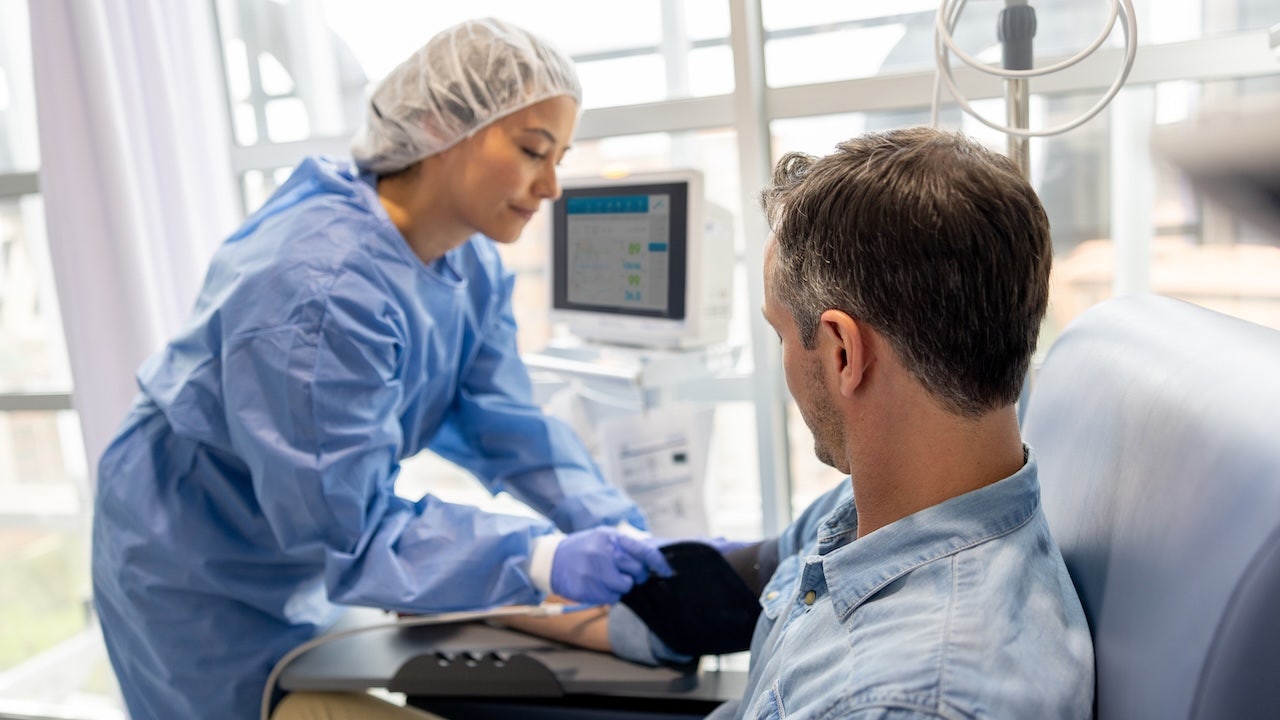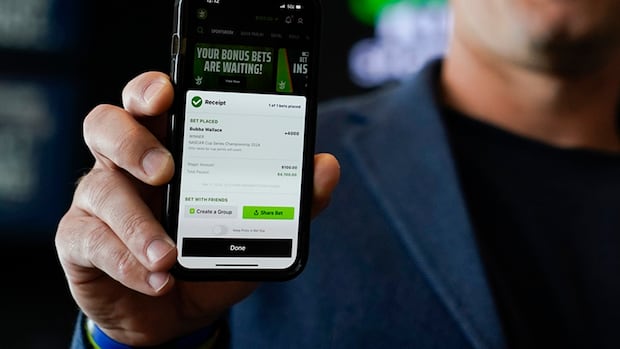Why Canada’s health-care system needs more Indigenous professionals

The Current18:54Indigenous life expectancy is dropping. How do we fix it?
When Dr. Danièle Behn Smith first saw the data on Indigenous life expectancy, her mind went to her own family.
The recent report by the B.C. First Nations Health Authority found that life expectancy for Indigenous people in the province had dropped by more than six years between 2017 and 2021. The life expectancy for Indigenous people in the province in 2021 was 67.2 years, compared to 82.5 years for non-Indigenous people.
In that same time frame, Behn Smith, B.C.’s Deputy Provincial Health Officer for Indigenous Health, lost an aunt, her brother and six cousins — eight family members in total.
“Although people can look at that and see data and numbers, those are our loved ones. Those are members of our family that we love and care about who are no longer sitting at our table,” Behn Smith told The Current’s Matt Galloway.
In 2015, the Truth and Reconciliation Commission’s final report called on the government to publish annual progress reports that capture a number of health indicators about Indigenous populations, including life expectancy, though not all provinces have followed through.
A 2023 report found that the life expectancy of Indigenous people in Alberta had dropped by seven years since 2015, to 60 years for Indigenous men and 66 for Indigenous women. The life expectancy among non-Indigenous people sat at 79 years for men and 84 years for women in that same time period.
For Behn Smith, the numbers are a “gut wrenching” reminder of how Indigenous people aren’t given proper care within health-care systems across the country.
She and other experts say the health-care system needs more Indigenous doctors, nurses and decision-makers — through changes in recruiting practices in health care and education programs — to improve Indigenous people’s health outcomes.
“Most of the decisions [about health-care programs and systems] are made at a very, very high level … by non-Indigenous people,” said Dr. Esther Tailfeathers, a family physician on the Blood Tribe reserve in Alberta and the former medical lead at Alberta Health’s Indigenous Wellness Core. “Those decision-making tables need to have Indigenous people who are well informed of what’s going on with our health care and with the drug crisis.”
Behn Smith says the problem is made more urgent because when Indigenous people die, their cultural knowledge is at risk of dying with them. She estimates there are only a few thousand members of her Eh Cho Dene community still living and only a handful who speak their language.
“We need every single member of our nation to be vibrant and healthy and self-determining so that we can keep ourselves going,” Behn Smith said.
Racism, lack of resources in system
Poor health resources in Indigenous communities and racism in the health-care system all contribute to the increasingly low life expectancy for Indigenous people, according to Tania Dick, a registered nurse and the Indigenous Nursing Lead at the University of British Columbia.
Dick says many remote communities rely on nurses for the majority of their health-care needs. While doctors and other health-care professionals fly in and out of the communities as needed, nurses are more likely to live in the communities and are there around the clock, taking on cases involving trauma, addictions and mental health that they may not have the training to handle.
“It ends up burning out our nurses,” Dick said. If nurses leave the profession as a result, it can sometimes be months before a new one picks up the job, she added.

And even when Indigenous people are able to access health-care, they still face racism within the system, she said.
Dick recounted a story about her aunt Debbie, who died of a head injury in 2008 after a fall. She suffered a brain bleed as a result that left her stumbling and confused, but Dick says hospital staff dismissed her as intoxicated and didn’t provide her with treatment.
“It was pretty … traumatizing for us. And it’s still really raw,” Dick said.
The In Plain Sight report, released in B.C., in 2020, found that Indigenous respondents in that province were more likely to be denied care, have their concerns minimized, endure rough treatment or have medical mistakes made by health-care professionals working with them, which the report said can result in death.
Similar instances have been reported in other provinces too, like Quebec, where an Indigenous mother, Joyce Echaquan, recorded herself being insulted and mocked by a hospital orderly shortly before she died in hospital.
Tailfeathers said that overdoses due to the toxic drug crisis has deadly effects for Indigenous people in both provinces
Tania Dick says she won’t be satisfied with the changes currently underway in the health-care system until all Indigenous patients feel safe seeking care.
She says that Alberta life expectancy data for Indigenous people takes a steep decline around 2019, around the time the province started to pull funding for harm reduction measures, specifically defunding a safe consumption site in Lethbridge which was the nation’s busiest.
How to fix it
Lengthening the expected lifespan of Indigenous people in Canada will take a concerted effort from those who currently are in positions of power, and the inclusion of Indigenous people in the health-care system, according to Behn Smith, Tailfeathers and Dick.
The B.C. report found that 0.39 per cent of physicians in the province identify as First Nations as of 2023, a marginal uptick from 0.32 per cent in 2019. In nursing, 1.54 per cent of nurses in the province in 2023 identified as First Nations; there was no data on nursing for previous years.
The report also called on health-care systems and educational institutions to “critically examine” their hiring practices in order to bring more Indigenous health-care workers and decision makers into their teams.
“It actually takes folks on the ground doing their everyday jobs to … really look for the ways in which our systems operate in the status quo to effectively exclude people,” said Behn Smith. She says these are the kinds of practices that will need to change in order to bring more Indigenous people into healthcare jobs.
Cheryl Whiskeyjack, the executive director of the Bent Arrow Traditional Healing Society, says some of the women her organization works with go to different medical centres to treat health issues as they come up out of a fear of judgment or stigmatization. ‘And that results in things being missed,’ Whiskeyjack told CBC News.
Tailfeathers also says medical and schools should include Indigenous topics and engage students with Indigenous people in the learning process so that graduates are better equipped to take care of Indigenous patients.
Dick says it’s incumbent on Indigenous allies to start this kind of work, as well.
“We can’t fix this as Indigenous people,” she said. “You need to fix it as non-Indigenous allies and … support us in this journey.”
A national Indian Residential School Crisis Line is available to provide support for survivors and those affected. People can access emotional and crisis referral services by calling the 24-hour service at 1-866-925-4419.
Mental health counselling and crisis support is also available 24 hours a day, seven days a week, through the Hope for Wellness hotline at 1-855-242-3310 or by online chat.






